What is Iaido?
An Introduction to the Japanese Art of Drawing the Sword
By Paul 'Batman' O'Brien
B.A., N.C.E.H.S., Dip. Acu., Adv. Dip. OBB, Cert Clin. Med. Pn1, PN-SSR, PN-NCA, M.AFPA, M.ETCMA, M.C.Th.A.
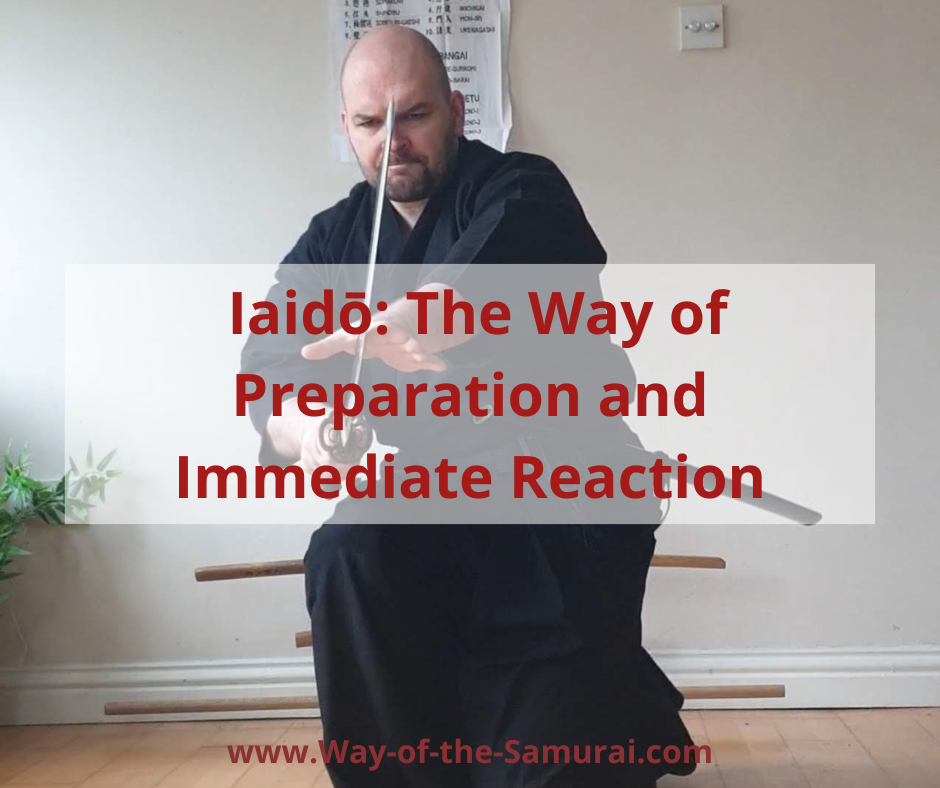
What is Iaido? Well, have you ever watched a samurai movie and been captivated by the lightning-fast draw of a Japanese sword? That elegant yet powerful motion is the heart of Iaidō, a Japanese martial art with a history stretching back hundreds of years. Unlike many martial arts that focus on sparring with opponents, Iaidō is primarily practised alone (though at more advanced levels, many koryū - old schools of Iai contain partner-based kata), making it a unique path for both physical training and personal development.
The Historical Roots of Iaido
We might begin to answer the question of What is Iaido, by looking at its origins. Iaido traces back to the turbulent times of medieval Japan, when samurai needed to be ready to defend themselves at a moment's notice. The art we now call Iaidō was developed around the late 16th century by a swordsman named Hayashizaki Jinsuke Shigenobu (1546-1621).
Legend tells us that after his father was murdered, young Hayashizaki prayed for 100 days at a shrine, seeking divine inspiration for his swordsmanship. Whether through divine intervention or dedicated practice, he developed techniques for drawing and cutting in a single motion - the foundation of what would become Iaidō.
During the peaceful Edo period (1603-1868), when actual sword combat became rare, these techniques evolved from purely practical methods into a disciplined art form. The emphasis shifted from simply defeating enemies to refining one's character through dedicated practice.
The Meaning Behind the Name
What is Iaido, like what does the word actually mean? The word "Iaidō" (pronounced ee-eye-doe) might seem mysterious at first, but it carries deep meaning. It comes from the Japanese phrase "tsune ni itte kyu ni awasu," which essentially means "being prepared at all times and in all situations." Breaking down the word:
- “I”, roughly comes from Iru, to be, being, existing, or presence
- “Ai” (as in Aikido) means coming together, harmony, or love; and
- “Dō” means road, path or Way (in the Buddhist sense).
Loosely translated, I interpret Iaidō as “The Way of Preparation and Immediate Reaction”
Together, these elements form a practice dedicated to maintaining awareness and readiness at all times. Iaidō teaches us to respond appropriately to whatever life presents - a lesson that extends far beyond the dojo (training hall).
The Four Elements of Iaidō
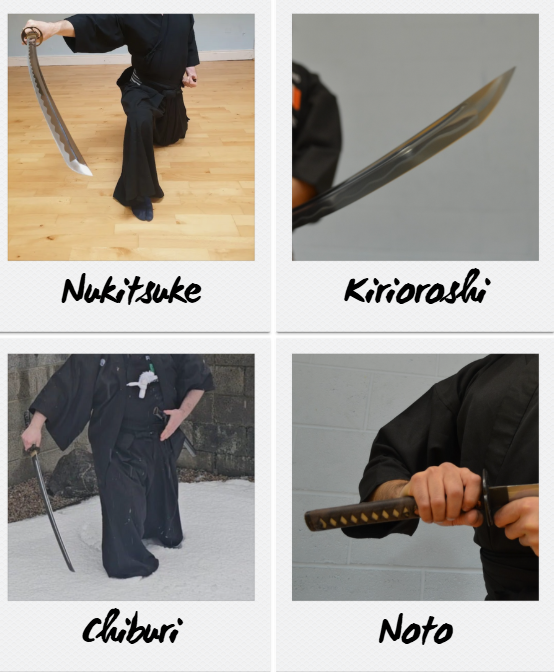
Perhaps the answer to "What is Iaido", can be found in the technique, often called a "kata," or "waza" contains four essential elements that follow a natural progression:
- Nukitsuke - The draw and initial cut, often executed in a single fluid motion
- Kiritsuke (Kirioroshi) - The finishing cut that completes the technique
- Chiburi (Chiburi) - A motion to symbolically remove blood from the blade (but is really a form of Zanshin - awareness)
- Noto - The return of the sword to its scabbard
These elements form a complete cycle that begins and ends with the sword sheathed. In practising these movements, the Iaidōka (Iaidō practitioner) develops not just technical skill but also mental focus, awareness, and proper breathing.
The Many Branches of the Iai Tree: Understanding the Different Paths of Iaidō: DNBK, ZNKR, ZNIR, and Koryu Traditions
All forms of Iaidō involve the art of drawing the Japanese sword and performing precise cutting techniques, usually through choreographed forms called kata. This experiential learning is the heart of all styles of Iaidō. And yep, there's a ton of different styles. When you first become interested in Iaidō, you might notice different terms like “DNBK”, "ZNKR Iaidō," "ZNIR Iaidō," and "koryū " mentioned in books or websites like this. So what is Iaido in this context?
These terms represent different organisational approaches and historical lineages within the art of Japanese swordsmanship. While these distinctions might seem confusing at first, understanding them can help you make informed choices about your training and deepen your appreciation for this fascinating martial art.
Aside from kata, all schools and styles of Iai emphasise proper etiquette, mental focus, and the development of awareness. And all trace their roots to the martial traditions of feudal Japan, where samurai warriors developed effective methods for using the sword in combat situations.
Think of these different approaches as branches of the same tree. They share common roots and many similarities, but each has developed distinct characteristics over time. Just as different branches of a tree grow in slightly different directions while remaining part of the same living organism, these different Iaidō traditions express the same fundamental principles through somewhat different forms and organisational structures.
What is Iaido - The DNBK: Greater Japan Martial Virtue Society
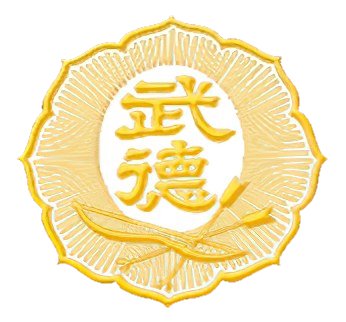
Very briefly, the Dai Nippon Butoku Kai (DNBK, 大日本武徳会) was founded in 1895 (Meiji 28), in Kyoto. Danzaburo Tanba, Kumataro Sasa, Hiroki Toriumi, and Noboru Watanabe, among others, aimed to organise a group supporting mental and physical discipline through martial arts education, and in April of the same year, the founding general assembly of the Dai Nippon Butokukai was held.
The DNBK was Japan’s first national organisation dedicated to preserving, standardising, and promoting traditional martial arts. Its creation reflected a wider movement to safeguard cultural traditions at a time when rapid modernisation threatened older practices. The DNBK initially emphasised kendō, judō, and kyūdō, later expanding to recognise and promote other classical martial systems (kōryū ), including the various styles of Iai.
Initially, the DNBK aimed to hold matches, known as Tenran Shiai, which would be witnessed by the Emperor of Japan himself, coinciding with an Imperial visit. However, as the Imperial visit was cancelled, the direction shifted towards nationwide expansion. At that point, Prince Akira Komatsu, who was the Chief of Staff at the time, was appointed as the president. The organisation's expansion was carried out by utilising the police as the central authority and leveraging the regional organisation of the Ministry of Home Affairs. This is all to say that the DNBK had deep Imperial, military, and government support from the very start.
Headquartered at the Butokuden (Martial Virtue Hall) in Kyoto, the DNBK set training standards, held demonstrations and examinations, and established ranking and title systems (such as renshi, kyōshi, and hanshi), many of which are still in use today. It became highly influential in shaping the pedagogy and public image of martial arts in Japan during the early 20th century.
After World War II, the Allied Occupation disbanded the DNBK in 1946 due to its strong ties with prewar nationalism and militarism. However, in 1953, it was reestablished as a cultural and educational organisation, distancing itself from its militaristic past. Today, the modern DNBK functions as an international body promoting martial arts as vehicles of character development, cultural exchange, and peace, while preserving the legacy of the original organisation.
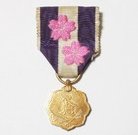
I began my Iai career in the study of kōryū (old-school) Musō Jikiden Eishin ryū Iai in the DNBK. You can read my first impressions here.
I was awarded Sandan (3rd Dan) in Musō Jikiden Eishin ryū Iaido in Oct 2013.
This was formally certified by the Dai Nippon Butokai on June 10th, 2015, by Higashifushimi Jiko, Chief Resident-Priest of Shorenin Temple, and First Cousin to His Majesty the Emperor Emiritus Emperor Akihito of Japan, son of Prince Kuni Kunihide, (later Count Higashifushimi Kunihide), who was the the youngest brother of Empress Kōjun and was the maternal uncle of Emperor Emeritus Akihito.
I did not seek further advancement in the DNBK, and it should be noted I later gave up my DNBK rank upon request in 2017 when I joined the British Kendo Association and European Kendo Federation, to start once again from the beginning.
What is Iaido - ZNKR: The Standardised Approach
In 1952, Japanese independence was restored, and the ban on martial arts in Japan was lifted. Immediately following this, the All Japan Kendō Federation (AJKF) or Zen Nihon Kendō Renmei (全日本剣道連盟 abbreviated 全剣連 Zen Ken Ren, ZNKR) was founded, though not officially formed until March 14th 1954.
The ZNKR was tasked with preserving and promoting the arts of Kendō, Iaidō, and Jōdō. It became apparent that the Kendō-ka required some rudimentary knowledge of how to handle a katana as opposed to a shinai. With this goal in mind and with the desire to popularise Iai an expert committee was established in 1967. The committee was composed of the senior most experts from a range of Iai schools. Yamamoto Harusuke was invited to represent Musō Jikiden Eishin ryū. In addition to him, the representative of Masaoka-ha Musō Jikiden Eishin ryū, Masaoka Ichijitsu (Kazumi), was also invited. The complete list is as follows:
- Yamamoto Harusuke, Musō Jikiden Eishin ryū
- Masaoka Ichijitsu (Kazumi), Musō Jikiden Eishin ryū
- Yamatsuta Jukichi, Musō Shinden ryū
- Kamimoto Eiichi, Hasegawa Eishin ryū
- Danzaki Tomoaki, Musō Shinden ryū
- Sawayama Shuzo, Hoki ryū
- Muto Shuzo, Hasegawa Eishin ryū
- Yoshizawa Ikki ryū, Hoki ryū
- Suetsugu Tomezo, Musō Shinden ryū
- Ohmura Tadaji, Musō Shinden ryū
- Nukada Hisashi, Musō Shinden ryū
- Tsumaki Seirin, Tamiya ryū
The committee spent 2 years developing 7 representative forms. In May, 1969, the first seitei iai kata were presented to the public at the Kyoto Taikai martial arts festival, held at the old Butokuden site in Kyoto. This demonstration consisted of 7 forms:
- Mae (前) (Found in Musō Jikiden Eishin ryū and Musō Shinden ryū)
- Ushiro (後ろ) (Found in Musō Jikiden Eishin ryū and Musō Shinden ryū)
- Ukenagashi (受け流し) (Found in Musō Jikiden Eishin ryū Omori ryū and Shigenobu Okuiai)
- Tsuka-ate (柄当て) (Similar to the Tatehiza-no-bu methods of Eishin ryū found in Musō Jikiden Eishin ryū and Musō Shinden ryū)
- Kesa-giri (袈裟切り) (Developed from the teachings of Hoki ryū)
- Morote-tsuki (諸手突き) (Found in many different schools)
- Sanpōgiri (三方切り) (A mixture of key movements found in the Okuiai methods of Shigenobu ryū found in Musō Jikiden Eishin ryū and Musō Shinden ryū)
These kata would be expanded in 1980 by:
- Kamimoto Eiichi, now representing Musō Shinden ryū
- Danzaki Tomoaki, Musō Shinden ryū
- Hashimoto Masatake, Musō Jikiden Eishin ryū
- Wada Hachiro, Musō Shinden ryū
- Mitani Yoshisato, Musō Jikiden Eishin ryū
- Sawayama Shuzo, Hoki ryū
And now included:
8. Ganmen-ate (顔面当て) (Derived from an Okuiai Musō Shinden ryū technique)
9. Soete-tsuki (添え手突き) (A famous Hoki ryū method).
10. Shihōgiri (四方切り) (A technique found in Hoki ryū and the Okuiai methods of Shigenobu ryū found in Musō Jikiden Eishin ryū and Musō Shinden ryū)
Most recently, in 2000, two more kata were added by:
- Ikeda Teruo
- Ueno Sadanori
- Kawamura Yoshio
- Kishimoto Chihiro
- Fukuda Kazuo
- Fujita Tadashi
- Fujita Mitsuaki
Now bringing us to 12 kata with:
11. Sōgiri (総切り) (Taken from a technique found in the Okuiai methods of Shigenobu ryū found in Musō Jikiden Eishin ryū and Musō Shinden ryū)
12. Nukiuchi (抜き打ち) (Derived from a Mugai ryū method)
These twelve kata are now the standardised set for the tuition, gradings, and dissemination of Iaidō within the Kendō federations. As a result of the kata Yamamoto Harusuke helped develop, ZNKR Iaidō has become the most widely recognised form of Iaidō in Japan and the rest of the world.
One of the main advantages of ZNKR Iaidō is its widespread availability. Because the All Japan Kendo Federation has branches throughout the world, finding a dojo teaching this standardised curriculum is relatively easy in most countries. The clear progression of techniques and standardised grading system also provides structured development that many beginners find helpful.
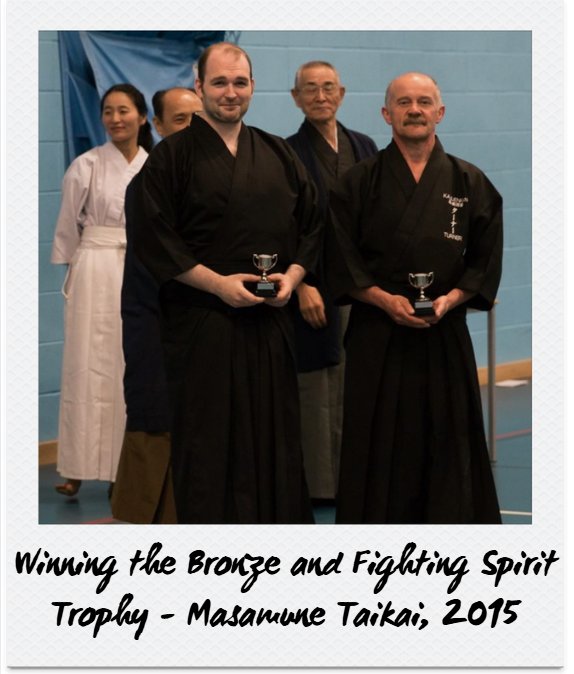
The ZNKR approach is particularly suited to those who appreciate clear standards, organised progression, and the opportunity to participate in competitions. ZNKR Iaidō includes formal competitions (taikai) where practitioners demonstrate techniques before judges who evaluate their performance according to established criteria.
I had no clue about this until the day of registration on my first Taikai, having just been taught the entire ZNKR curriculum over two days, the 26th and 27th June 2015, by Len Bean Sensei, 7th Dan Kyoshi. He awarded me the rank of 2nd Kyu without a formal examination, and I was allowed to enter the Taikai. I won Bronze at the Mudan level (no Dan rank) and won the Fighting Spirit Trophy. A full account is available here.
For those who are motivated by such structured evaluation, this competitive element can provide meaningful goals and feedback, and I have been honoured to win more Taikai and to represent Ireland at the highest level of international competition at the European Iaido Championships several times.
Many ZNKR dojos, like mine, also teach traditional kōryū schools alongside the standardised forms, typically introducing these traditional techniques after students have developed basic proficiency in the Seitei forms. This creates a balanced approach that combines the accessibility of standardised techniques with the depth of traditional lineages.
What is Iaido - ZNIR: Preserving Traditional Schools
ZNIR stands for Zen Nihon Iaidō Renmei, or the All Japan Iaidō Federation. Unlike the ZNKR, which oversees multiple martial arts, the ZNIR focuses exclusively on Iaidō, with particular emphasis on preserving traditional schools in their complete form. The organisation was founded to maintain the integrity of traditional Iaidō lineages, particularly the Musō Jikiden Eishin ryū tradition.
Before the All Japan Kendō Federation, including Iaidō, Kōno Hyakuren, 19th Headmaster of Musō Jikiden Eishin ryū, felt it was the continuation of his mission to publish and promote Iaidō that he should establish a dedicated organisation to do just that.
In May 1954, Kōno Hyakuren founded the All Japan Iaidō Federation (全日本居合道連盟 Zen Nippon Iaidō Renmei / ZNIR), appointing the future Prime Minister of Japan (1960 to 1964), Hayato Ikeda (池田 勇人, 3rd December 1899 – 13th August 1965) as its chairman, while Kōno Hyakuren himself became chairman of the board.
On the 2nd of May 1955, the 1st ZNIR Iaidō Tournament was held, with Nakayama Hakudo, Sasamori Junzo, Fukui Harumasa, Ocho Kuro, Yagyu Yoshinaga as advisors present, along with Tokutomi Soho acting as Taikai chair.
In 1956, after the formal establishment of Iaidō within the All Japan Kendō Federation (ZNKR), the All Japan Iaidō Federation (ZNIR) discussed merging the two organisations, but no consensus was reached and Kōno Hyakuren broke off negotiations.
The Development of ZNIR Tōhō (刀法)
Due to the varying styles in the All Japan Iaidō Federation, Kōno Hyakuren Sensei felt that a series of common techniques, or waza, should be formed upon which one could gauge progress and mastery of iai and establish a grading and competition system. These forms were created in 1956 and were inspired by the five major ryū present. This set is known collectively as "Tōhō" (刀法) (sword method) and consists of the following:
- 前切 Mae-giri from Musō Jikiden Eishin ryū (無双直伝英信流), founded during the late Muromachi period - ca. 1590
- 前後切 Zengo-giri from Mugai ryū (無外流), founded in 1695
- 切上 Kiri-age from Shindō Munen ryū (神道無念流), founded in the early 1700s
- 四方切 Shihō-giri from Suiō ryū (水鴎流), founded during the early Edo period - ca. 1615
- 切先返 Kissaki-gaeshi from Hōki ryū (伯耆流), founded during the late Muromachi period - ca.1590
In ZNIR dojos, students typically begin immediately with traditional kōryū school techniques rather than standardised forms. The ZNIR approach emphasises faithful transmission of traditional techniques with minimal modification. This creates a direct connection to historical lineages and preserves the distinctive characteristics of each school, but is less internationally widespread than ZNKR Iaidō.
What is Iaido - Koryū: The Classical Schools
The term "koryū " literally means "old school" or "classical school" and refers to martial traditions established before the Meiji Restoration of 1868. These classical schools (ryūha) represent the oldest and most traditional approaches to Japanese swordsmanship, often preserving techniques and methods developed during Japan's feudal period when swords were practical weapons rather than tools for self-development.
While both ZNKR and ZNIR include elements of koryū traditions, some classical schools operate independently of these larger organisations, maintaining their own distinctive training methods, technical approaches, and organisational structures. These independent kōryū schools often emphasise direct transmission from teacher to student, with techniques and principles passed down through established lineages of headmasters.
Some prominent kōryū traditions that include Iaidō or related sword-drawing arts include Musō Shinden ryū, Musō Jikiden Eishin ryū (also practised within ZNIR), Tamiya-ryū, Hoki-ryū, Suio-ryū, and several others. Each has distinctive characteristics, technical emphases, and historical lineages that reflect their unique development.
Training in independent koryū schools often involves more comprehensive martial systems beyond sword-drawing techniques. Many include paired practice (kumitachi), techniques against multiple opponents, responses to various weapons, and strategic principles derived from battlefield experience. This broader context helps practitioners understand how Iaidō techniques relate to comprehensive combat systems rather than existing as isolated forms.
Koryū training typically emphasises close teacher-student relationships, with techniques transmitted directly through physical demonstration and hands-on correction rather than a standardised curriculum or written materials. This personal transmission preserves subtle aspects of technique that might be difficult to capture in standardised approaches.
For those particularly interested in historical authenticity, comprehensive martial systems, and direct transmission through established lineages, independent koryū schools offer unique training experiences. However, these schools are less widely available internationally and generally have more selective admission practices than larger organisations.
What is Iaido for You? Finding Your Path
As a beginner considering what is Iaido training, how should you approach these different traditions? The good news is that you don't need to make a definitive choice immediately. Many practitioners explore different approaches throughout their training lifetime, finding value in each tradition's unique perspective. I started in koryū, was told by a hachidan hanshi to start training in ZNKR so that I could be formally recognised and did so, returning then to kōryū. Along the way I got to learn various other styles and ryū, including the ZNIR Tōhō, Dai Nippon Battō Hō, Keishi Ryū etc.
The most practical first step is simply finding qualified instruction in your area. Whether a local dojo teaches ZNKR standardised forms, ZNIR traditional curriculum, or independent koryū techniques, sincere practice under qualified guidance will provide valuable development. The foundational principles remain consistent across these approaches, and good instruction in any tradition will serve you better than a theoretical preference for an unavailable approach.
When visiting potential dojos, observe how instruction is delivered, how students interact, and whether the atmosphere feels supportive for beginners. These factors often matter more for your initial development than specific organisational affiliations. A good teacher can provide excellent guidance regardless of which tradition they represent.
As you progress in your training, you might have opportunities to attend seminars or workshops featuring instructors from different traditions. These experiences can broaden your understanding and help you appreciate the distinctive characteristics of various approaches. Many experienced practitioners maintain primary affiliation with one tradition while occasionally studying with teachers from others, creating balanced development that benefits from diverse perspectives.
Remember that all legitimate Iaidō traditions share fundamental goals - developing proper technique, cultivating awareness, and fostering personal growth through disciplined practice. While their specific forms and organisational structures differ, they all offer paths to these same essential benefits. Committed engagement to A tradition that you practice matters more than WHICH tradition you practice.
The journey through Iaidō, regardless of which path you follow, offers remarkable rewards - improved physical coordination, enhanced mental focus, connection to Japanese cultural traditions, and development of personal qualities like patience, precision, and awareness. Whichever tradition becomes your primary practice, approaching it with an open mind and sincere effort creates the conditions for meaningful growth that continues throughout life.
As you begin exploring Iaidō resources here and considering training options, maintain a balance between informed understanding of these different approaches and simple appreciation for the art itself. The distinctions between traditions matter less than the quality of instruction available to you and your own sincere commitment to practice. With dedicated training under qualified guidance, any of these paths can lead to profound development in both technical skill and personal qualities, and you can discover what is Iaido for you.
You've been discovering the answer to What is Iaido. Check out my first impressions here.
Click here to return to the Way of the Samurai Home Page.
Free Samurai E-books
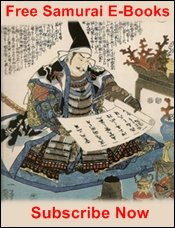
Get Free Exclusive Samurai Guides and E-books








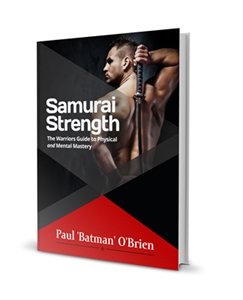
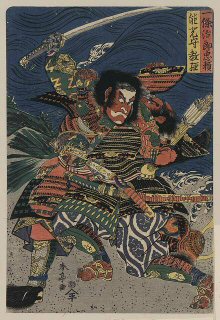
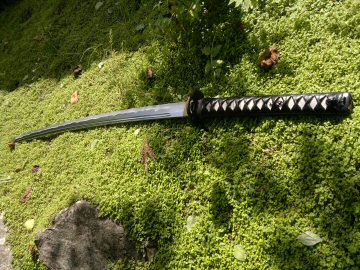
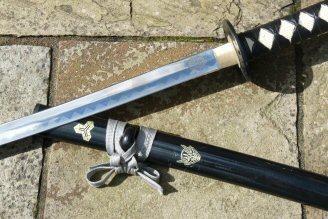
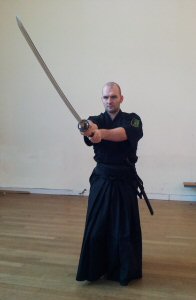
New! Comments
Have your say about what you just read! Leave me a comment in the box below.